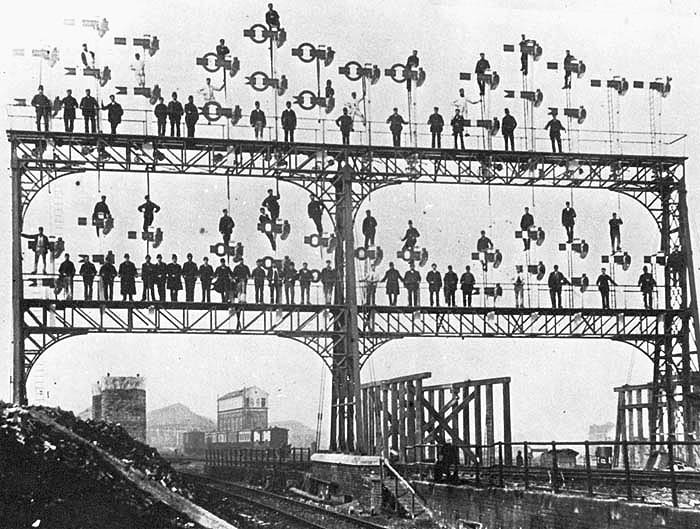This photo comes from the John Barriger collection now hosted by Flicker.
This is Sapulpa, OK just south of Tulsa (Cherokee yard), and looking south. The Creek sub to Fort Worth, TX takes off to the left. The Oklahoma sub to OKC and Quanah, TX takes off right. The CTC double crossover is protected by searchlight signals. Beyond the crossover the mainlines are protected by upper quad semaphores. And there is a two-light train order signal for each sub. If you copy this photo to your computer and open it with a zoomable viewer, it shows great detail. The camera frame has already gone past the home signals for the southward approach to the Sapulpa crossover. There is a line side telephone in a shelter on the east side of the two-main-tracks in the middle of the A-block. This is where O.O. Martin running light engines rolled right past the double red signal to drop me off precisely at the door of the phone shelter on Christmas day 1981. As my foot touched the ground he was deftly backing out to clear.
the mainlines are protected by upper quad semaphores. And there is a two-light train order signal for each sub. If you copy this photo to your computer and open it with a zoomable viewer, it shows great detail. The camera frame has already gone past the home signals for the southward approach to the Sapulpa crossover. There is a line side telephone in a shelter on the east side of the two-main-tracks in the middle of the A-block. This is where O.O. Martin running light engines rolled right past the double red signal to drop me off precisely at the door of the phone shelter on Christmas day 1981. As my foot touched the ground he was deftly backing out to clear.
Occasionally we would arrive eastbound into Sapulpa and come alongside a northbound up from Ft. Worth and see who got the signal at Oma where it becomes single track CTC. ( It was usually the other guys).
Show us some more signals. I love 'em.










